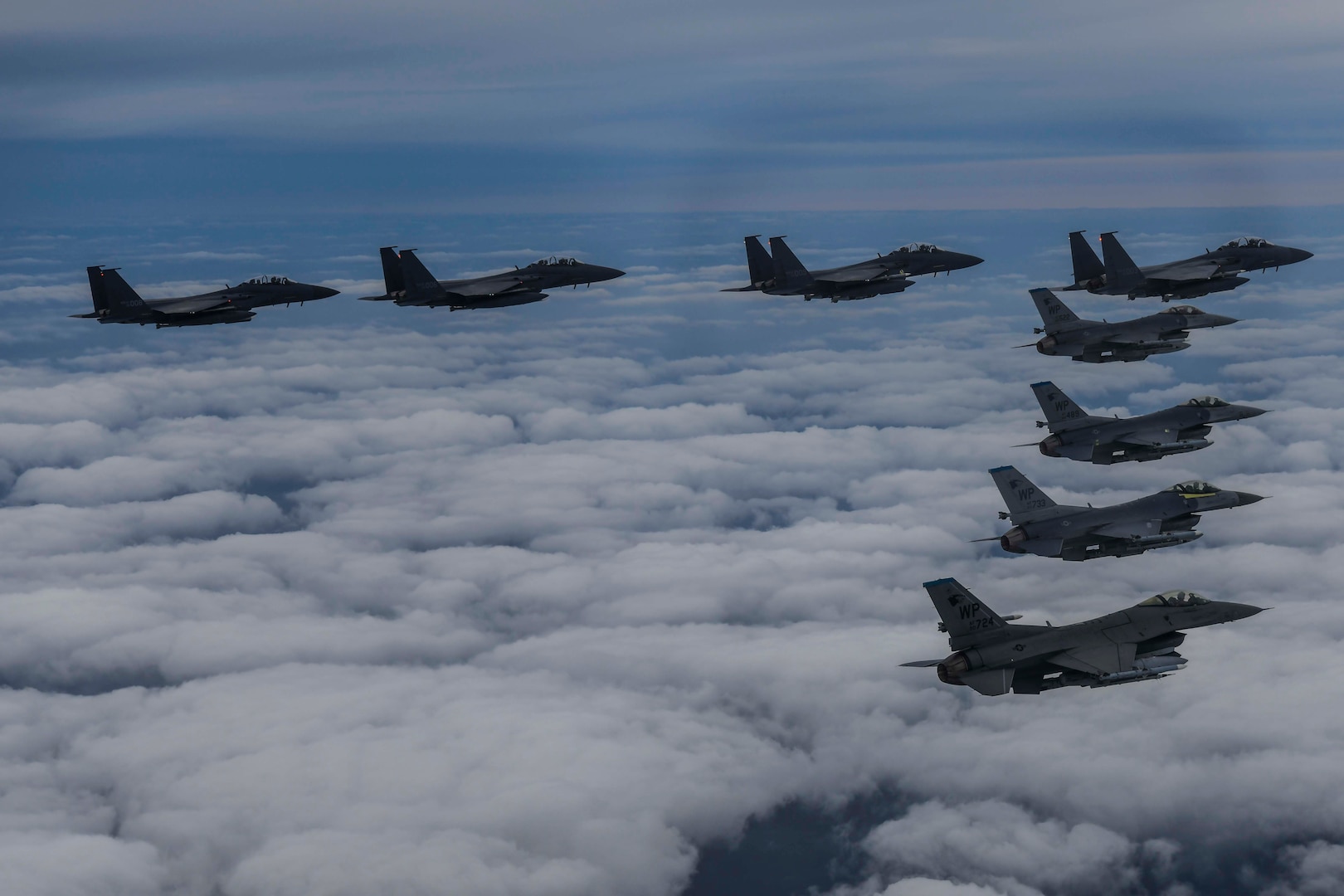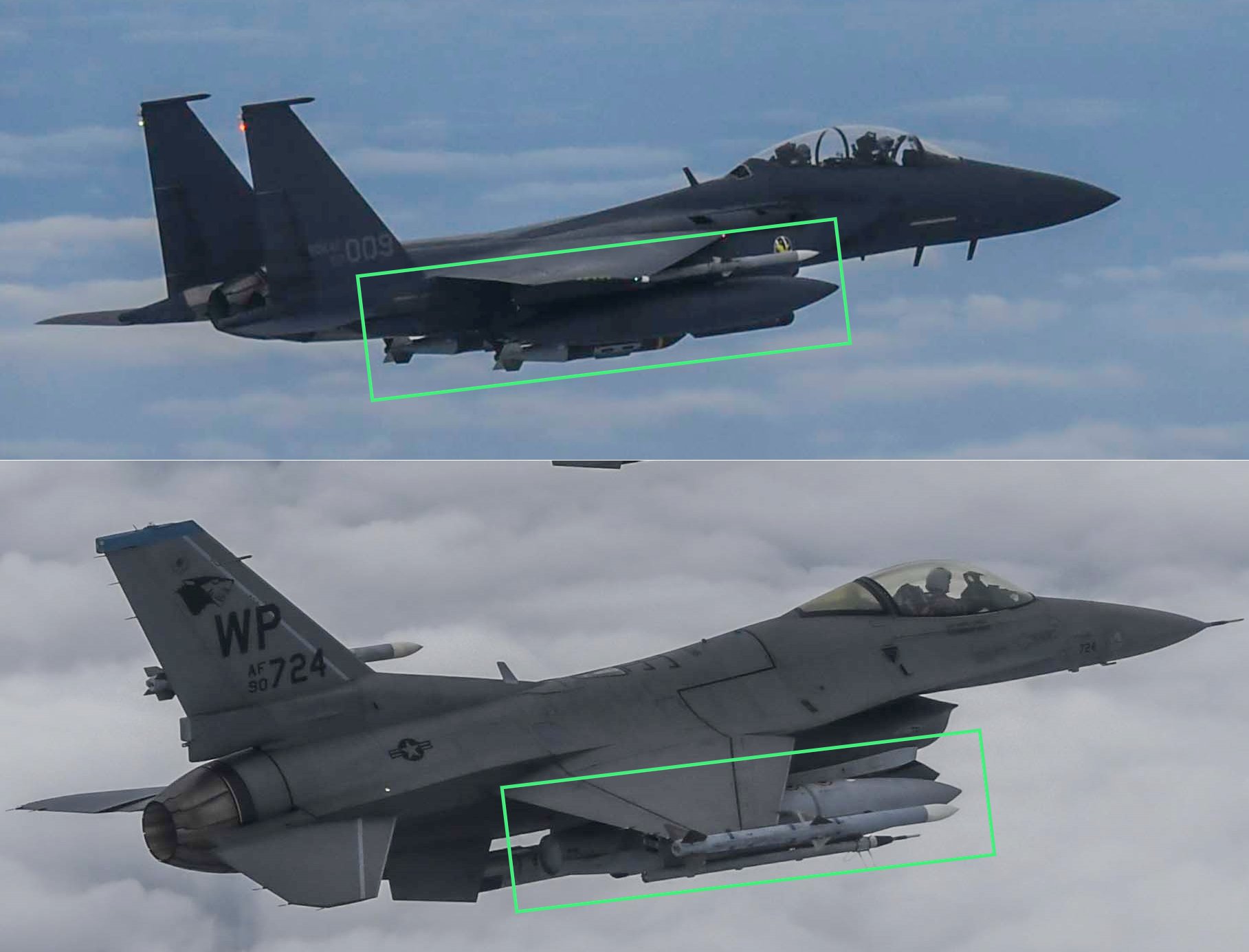South Korean and US fighter jets carried out precision bombing drills as part of a bilateral exercise over the West Sea on October 4 in response to North Korea’s intermediate-range ballistic missile launch on the same day.
Russian Official Warns Of ‘Space War’; Wants To Blow Up NATO Satellite Constellation & Disable HIMARS
Putin-Biden Meet: Could Russia & US Talk Peace On Ukraine War Through A Modi-Erdogan Brokered Liaise?
“With the participation of four South Korean Air Force F-15Ks and four US Air Force F-16 fighters, South Korea’s F-15K fired two joint direct attack munition (JDAM) bombs against a virtual target at the Jikdo shooting field in the West Sea,” South Korea’s Joint Chiefs of Staff (JCS) said.
The drills aimed to demonstrate the allies’ “capabilities to conduct a precision strike at the origin of provocations,” JCS added.

Shortly after, the photos of these widely publicized exercises started circulating on social media. One netizen pointed out that the South Korean F-15K Slam Eagles were carrying live munitions, unlike the American F-16s.
An interesting detail about this photo is that the ROK F-15K Slam Eagles are carrying live JDAMS and AMRAAMs while the USAF F-16s are carrying inert AMRAAMS and ACMI training pods. I guess somebody meant business and someone just came to play. https://t.co/WpudBuhrL8 pic.twitter.com/EERoytOoWl
— IntelWalrus (@IntelWalrus) October 5, 2022
“ROK [Republic of Korea’s] F-15K Slam Eagles are carrying live JDAMs [joint direct attack munitions] and AMRAAMs [AIM-120 Advanced Medium-Range Air-to-Air Missile] while the USAF F-16s are carrying inert AMRAAMS and ACMI training pods,” noted a Twitter handle by the name of @IntelWalrus
“I guess somebody meant business, and someone just came to play,” @IntelWalrus said.
EurAsian Times talked to experts to understand why the American fighters, unlike their South Korean counterparts, could be carrying inert weapons in bilateral precision bombing drills.
UPDATE: South Korea's Joint Chiefs of Staff provided this F-15K flight video. pic.twitter.com/2Q1qwB4lSv
— NK NEWS (@nknewsorg) October 4, 2022
According to veteran Indian Air Force (IAF) fighter pilot Squadron Leader Vijainder Thakur, a possible explanation would be that “the ROK fighter is heading towards a US-managed instrumented range for practice live firing of JDAMS & AMRAAM. The F-16 with its ACMI pod is recording data, such as release parameters, for pilot debrief.”
Colonel Konstantinos Zikidis of the Hellenic Air Force (HAF) told the EurAsian Times that “from a technical point of view, most training exercises are carried out with the use of inert ordnance, apart from the ammunition which is going to be spent.

“This is not only for safety but mainly for the optimal preservation of operational weapons. It should be taken into account that from the moment a live weapon is removed from its container (where it could stay for at least ten years) and is used in operational conditions, there is a tight limit, depending on the number of flights, the weather conditions, etc.
“When this limit is reached, the weapon must be removed from active service and undergo an inspection (which could be costly). We generally do not take a weapon out of storage unless there is a good reason.
“Concerning the recent US and RoK exercise, the fact that ROKAF F-15s were carrying live weapons while USAF F-16s were carrying inert AMRAAMs and ACMI training pods seem perfectly normal. The ROKAF F-15s had to carry live JDAMs since they conducted a JDAM strike.

“No air-to-air firing was involved in that exercise, so the USAF F-16s were not expected to carry live missiles.”
From a political point of view, Zikidis thinks that even if “the US would like to show their commitment to the defense of South Korea, firing a missile against Kim’s aircraft would be a quite different story, since such action would mean that the US was going to war with North Korea.”
Tensions At All-Time High Over Korean Peninsula
The precision bombing drill on October 4 was one of many air, ground and naval drills conducted by Seoul and Washington in the aftermath of North Korea’s intermediate-range ballistic missile launch that flew over Japan.
On October 6, South Korea scrambled an unusually large number of fighter jets in response to a very rare air-to-surface firing exercise reportedly conducted by North Korean warplanes across the border.
Eight North Korean fighter jets and four bombers flew in formation north of the inter-Korean air border for around an hour, presumably carrying out air-to-surface firing exercises, according to South Korea’s Joint Chiefs of Staff (JCS).
South Korea dispatched 30 fighter jets, including F-15K Slam Eagles — a significantly high number of aircraft scrambled by the ROK Air Force.
Seoul reacted strongly because the North Korean fighters reportedly crossed over the Special Reconnaissance Line, a boundary established by Seoul just north of the Military Demarcation Line (MDL), the land border between North Korea and South Korea, which runs more or less through the center of the Korean Demilitarized Zone.
North Korea and South Korea recognized the no-fly zone for fixed-wing aircraft overhead the MDL in 2018.
On October 9, North Korea fired two more ballistic missiles outside Japan’s exclusive economic zone (EEZ). The missiles are suspected to be submarine-launched ballistic missiles.
According to South Korean officials, the recent uptick in the number of missile launches by North Korea suggests it could soon resume nuclear testing for the first time since 2017, with preparations observed at its test site for months.
- Contact the author at tanmaykadam700@gmail.com
- Follow EurAsian Times on Google News





